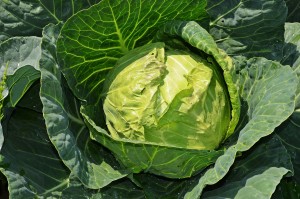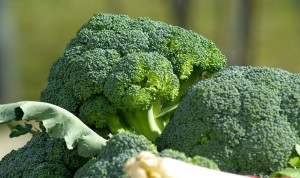Even though the harvest from our garden and/or the farmer’s market is slowly coming to a close, we still need to find a way to get in our daily serving of vegetables. Fall, by necessity, requires a shift in thinking about how we shop, prepare, and cook for the cooler months. Like me, many of you may find you begin using the slow cooker more or roast your vegetables instead of eating them cold and raw.

Even though the harvest from our garden and/or the farmer’s market is slowly coming to a close, we still need to find a way to get in our daily serving of vegetables. Fall, by necessity, requires a shift in thinking about how we shop, prepare, and cook for the cooler months. Like me, many of you may find you begin using the slow cooker more or roast your vegetables instead of eating them cold and raw.
Thankfully, the vegetables classified as cruciferous are plentiful in grocery stores all year round. Cruciferous vegetables include choices such as broccoli, cabbage, cauliflower, and brussel sprouts. They are rich in beta-carotene, lutein, vitamins, C, E, & K, folate, and minerals. They are also a great source of fiber. Cruciferous vegetables provide antioxidants and glucosinolates (sulfur-containing compounds that may help prevent cancer). Those chemicals also explain the distinct “aroma” that fills your kitchen when you cook them. Cruciferous choices add variety to your vegetable intake and contain less than 60 calories per cup cooked.
How can you fit these powerhouses into your meals? Add broccoli florets or shredded green or savoy cabbage to soups, stir fries, or to your morning eggs or omelet. Try an easy cabbage roll casserole if you don’t have a lot of time to make the original. Oven roasting brings out the natural sugars and a mellow sweetness in these vegetables, so consider roasting a whole head of cauliflower. I personally like roasted Brussel sprouts. After removing from the oven, sprinkle a bit of parmesan cheese on the veggies or toss in some dried cranberries and toasted pecans for a festive holiday side dish.
Written by: Melissa Welker M.Ed., B.S., Family and Consumer Sciences Extension Educator, Ohio State University Extension, Fulton County, Maumee Valley EERA, welker.87@osu.edu
Reviewed by: Donna Green, Family & Consumer Sciences Educator, Ohio State University Extension, Erie County, Erie Basin EERA, green.308@osu.edu
Sources:
http://www.cancer.gov/about-cancer/causes-prevention/risk/diet/cruciferous-vegetables-fact-sheet
http://ohioline.osu.edu/hyg-fact/5000/pdf/5512.pdf
http://ohioline.osu.edu/hyg-fact/5000/pdf/5513.pdf
http://www.diabetes.org/mfa-recipes/recipes/cooked-vegetables-quick.html


